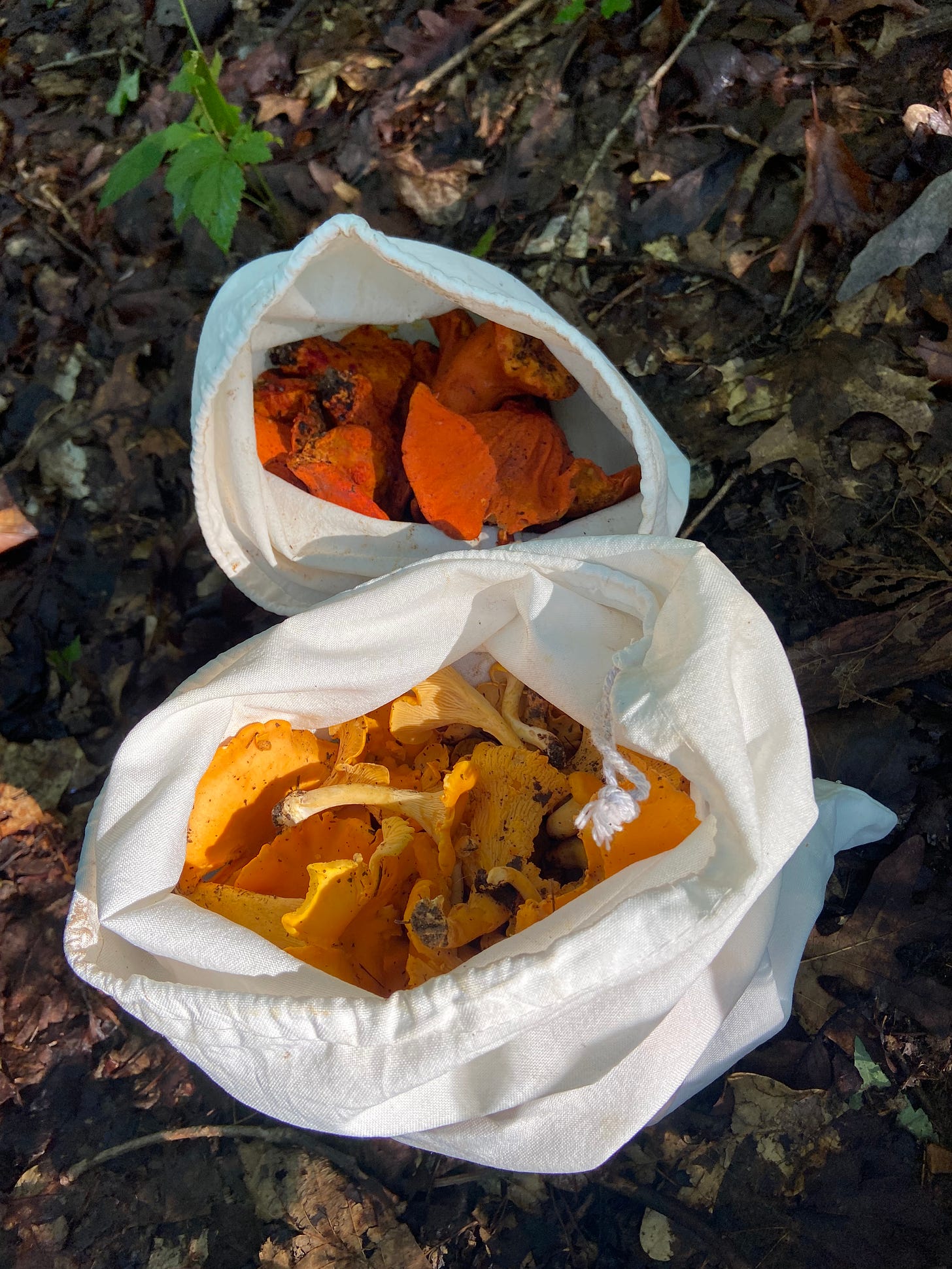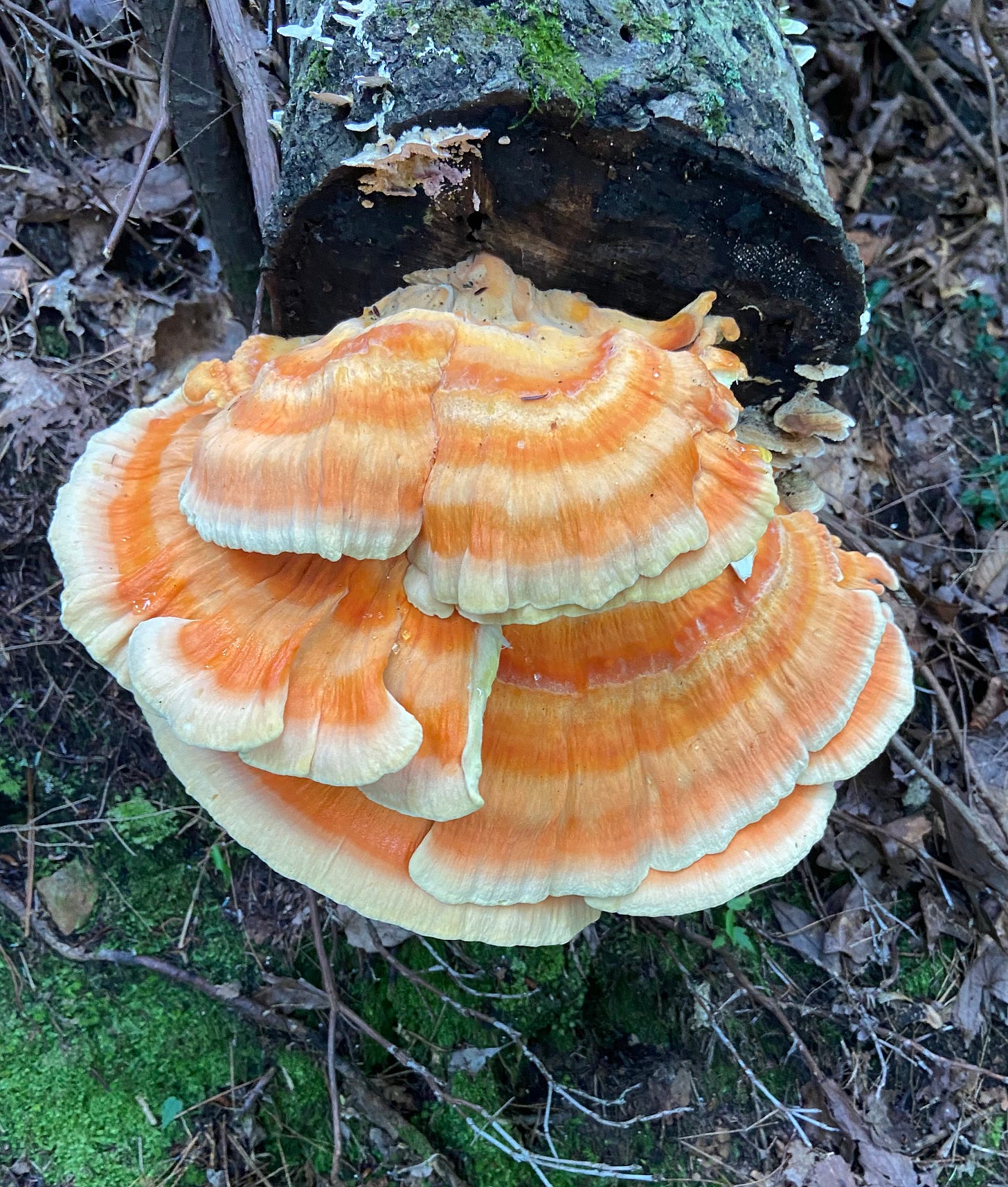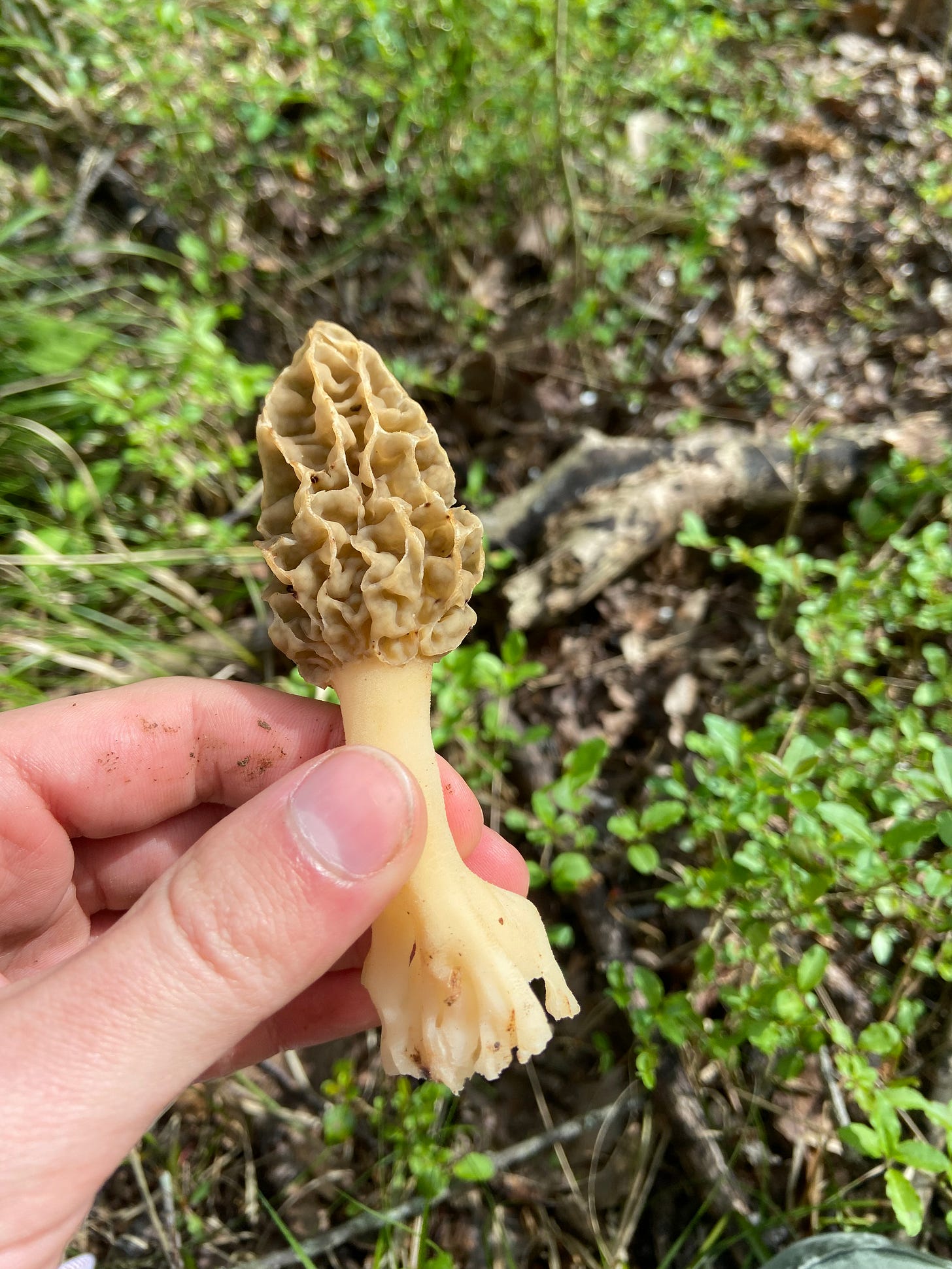Fungi
Vectors of sustenance and reciprocity
A phobia persists within the crevices of Western culture, a mycophobia (“fear of mushrooms”). In both urban and rural environments, children are engrained with fear and avoidance of these strange, slimy creatures that can make you sick, hallucinate, or even kill you. The varieties of Agaricus sold at grocery stores as buttons and portobellos are the extent of most’s culinary exploration into the expansive world of mushrooms.
Within this cultural embedding exists a wall; an impediment preventing the expansion and transmutation of one’s current fear-based and individualistic conception of reality into that of a more-symbiotic truth. We have no need to fear the fungal kingdom. We, after all, are more closely related to fungi than we are to plants, and share a common ancestor around 1.1 billion years ago. In the shifting of this narrative, we open a door to a greater possibility - the potential of this diverse expression of life as a vector of sustenance and reciprocity.
“Each step that we take in the more intimate knowledge of nature leads us to the entrance of new labyrinths.” - Alexander von Humboldt
Where and how do we start in deepening our connection with fungi?
It can be as simple as going on a hike and taking pictures of the mushrooms you see. Apps such as iNaturalist can assist in the identification of these mushrooms (as well as contribute to research through a body of knowledge formed by citizen scientists). Though, in order to get a more detailed and reliable assessment, I suggest the use of a good mushroom field guide tailored to your geographic region. I regularly use the National Audubon Society’s Field Guide to Mushrooms and North American Mushrooms: A Field Guide to Edible and Inedible Fungi by Miller and Miller.
Tapping into the network of social media mycologists can also be a great entry point into the world of fungi - Alan Rockefeller (@alan_rockefeller), Dinelly Soto (@dine_cortinaria), and Giuliana Furci (@giulifungi) are some of my favorites. Literature such as Sheldrake’s Entangled Life and films like Fantastic Fungi can further one’s understanding of how fungi influence our lives and futures. I also suggest going to farmers markets to get familiar with the cultivated varieties of mushrooms by local growers, such as Gowin Valley Farms of the greater Chattanooga region.
When we bake bread, ferment alcohol, garden, or simply place our hands in the soil, we are interacting with this kingdom of life.
Vectors of Reciprocity
The dog-eat-dog notion of the natural environment as a place of conflict and rugged individuality displays an outdated system of thinking - “Survival of the Fittest” is not the way that all of nature functions. The works of Suzanne Simard, further emphasized by prominent mycorrhizal researcher David Read in his piece “The Ties that Bind,” reveal to us that forest systems are based not on exploitation and competition, but of collective flourishing. Fungi form nutrient bridges between plants in forest ecosystems, playing active roles in the partitioning of resources and plant-to-plant signaling.
How does our view of the “individuality” of a tree change when we consider all the connection and exchange happening below the surface? Shifting our narrative into one of reciprocity and collaboration can likewise shift the inner narrative of our sense of self and relation to what is seemingly external.
“Consider a blind man with a stick. Where does the blind man’s self begin? At the tip of the stick? At the handle of the stick? Or at some point halfway up the stick?” - Gregory Bateson
Sustenance, Seasonality, and Foraging
Mushrooms, like us all, are connected with seasons. Springtime brings us the wonder of morels. The warmth of summer provides delicacies like chanterelles, black trumpets, chicken of the woods, and lobsters. And the cooler months offer oysters, enoki, blewits, and lion’s mane.
Consumerist society and modern Western culture have pushed our experience of seasons into a simulacrum (I encourage an exploration of Baudrillard’s 4 steps from representation to simulation in his work “Simulacra and Simulation”). For many, pumpkin spice lattes are a staple of the fall experience, a sense of nostalgia for something that never existed and never contained pumpkin in the first place.
When we eat seasonally, we are connecting our inner selves with the external reality and experiencing the joyous blessings of what is only offered to us here and now. Foraging also decreases our dependence upon unsustainable food systems and practices, significantly decreases our plate’s carbon footprint, and stimulates the formation of a deeper connection with our deep past.
Morels
Morels, considered a culinary delicacy, are commonly found in lowlands near creeks, growing in disturbed habitat and often in association with privet, honeysuckle, tulip poplar, and ash. Their season ranges from late-February - May depending on your geography. They have a honeycomb-textured cap and a hollow interior. (Never consume a mushroom you have not positively identified!)
To cook, first do a dry-sauté to remove excess water content from the mushrooms. Then add oil/butter if desired and any seasonings to match the flavor profile of what you are cooking. Morels are great with pasta, eggs, risotto, grits, or just by themselves!





